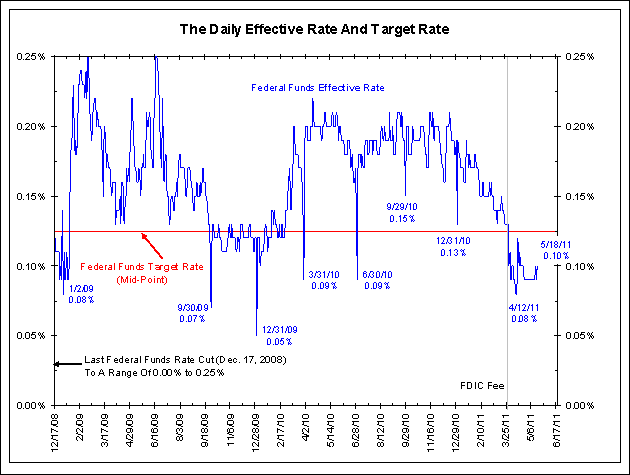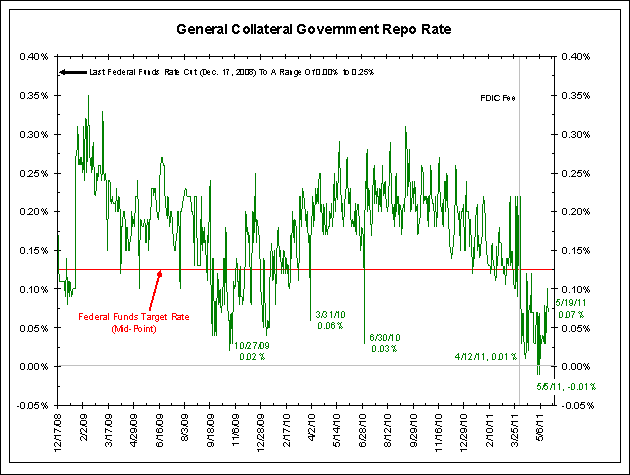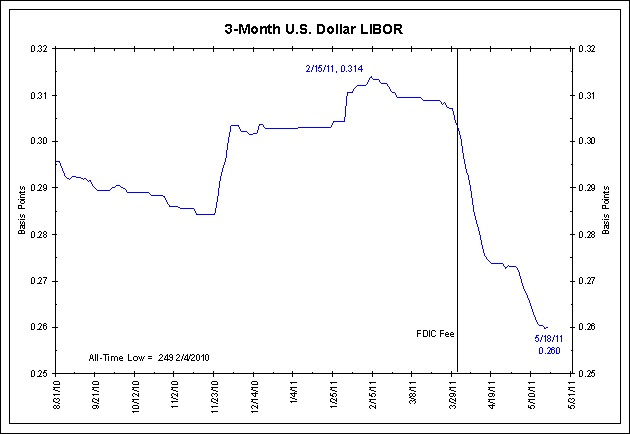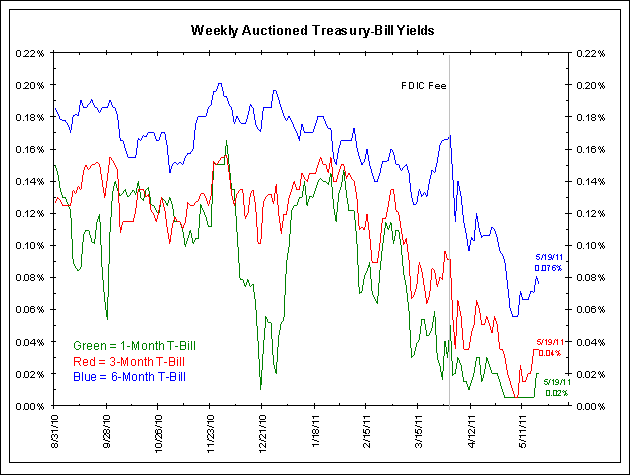Comment
- The Wall Street Journal – Fed Officials See Gradual Exit Plan
Minutes of the Fed’s April 26-27 meeting, released Wednesday with the normal three-week lag, showed Fed officials had an extensive discussion about what is known as their exit strategy from an era of easy credit…In normal times this wouldn’t require much debate. The Fed would simply raise its benchmark short-term interest rate, known as the federal funds rate, to tighten credit, slow growth and pull back inflation. Because of the unusual steps it took during and after the financial crisis, its exit from easy-money policies this time around will be more complicated. It must substantially reduce a $2.4 trillion portfolio of mortgage and Treasury securities. The first step, as Fed chairman Ben Bernanke indicated in a first-ever news conference following the April meeting, will be a decision to allow the mortgage portfolio to start shrinking on its own—by allowing the securities to mature without reinvesting the proceeds in Treasurys, as it has been doing. At the same time or shortly thereafter it will do the same thing with some of its long-term Treasury bonds. At some point, the Fed will slowly and steadily sell its mortgage holdings. Officials were inclined to hold off on active securities sales until after they had taken other steps, including raising the short-term fed funds rate, the minutes showed.
Comment
We found the following passage from yesterday’s FOMC minutes interesting:
A number of participants noted that it would be advisable to begin using the temporary reserves-draining tools in advance of an increase in the Committee’s federal funds rate target, in part because doing so would put the Federal Reserve in a better position to assess the effectiveness of the draining tools and judge the size of draining operations that might be required to support changes in the interest on excess reserves (IOER) rate in implementing a desired increase in short-term rates. A number of participants also noted that they would be prepared to sell securities sooner if the temporary reserves-draining operations and the end of the reinvestment of principal payments were not sufficient to support a fairly tight link between increases in the IOER rate and increases in short-term market interest rates.
Earlier this month we commented on the Federal Reserve’s exit strategy, detailing this exact point. Namely, the Federal Reserve is not sure raising rates will produce the intended result. This is a point that few Federal Reserve watchers seem to understand. Here is what we wrote two weeks ago and yesterday’s minutes only confirm it:
Our interpretation of these internal debates is that the Federal Reserve is worried interest that reserves will not be an effective tool in raising market interest rates. As we noted last month, this tool was ineffective in creating a floor on the funds rate in 2008. Additionally, the FDIC fee must be worrying Federal Reserve officials. In order for interest on reserves to be effective, the Federal Reserve might have to hike a lot (say 75 basis points) to get a small hike in market rates (say 25 basis points). Such an over-sized hike carries the risk of being misinterpreted as a panicked move by the FOMC.
Because of this, some in the FOMC seem to be arguing that assets should be sold before rates are raised. This is a sequence that we have long favored. Unfortunately, reducing the balance sheet to a more normal level will likely require a prolonged period of asset sales (which is why we did not favor QE2). If inflation expectations reach unacceptable levels, the market will not have this kind of patience. This could force the FOMC’s hand to raise interest on reserves by a large margin, bringing with it the same problems mentioned above.
We believe the Federal Reserve knows all this, which is why they had “intense” debates about the exit strategy last week. They understand that unacceptably high levels of inflation expectations are not good and could lead to a lot of market misunderstandings and volatility. The bottom line is they are still not sure how or what sequence they should use because they are not sure what will happen when the exit strategy begins. They are guessing, like the rest of us.
Bottom Line: The FOMC, and many Federal Reserve watchers, want us to believe everything is under control. We disagree, seeing the exit strategy as a giant leap of faith. It is a leap that is manageable if inflation expectations stay within acceptable levels (“well anchored” as the Bernanke puts it) and gets “messy” should inflation expectations move higher.
These minutes also frequently mention inflation expectations, as did Bernanke at his press conference last month. Again, when discussing Federal Reserve policy, one must start with inflation expectations, TIPS inflation breakeven rates and the University of Michigan inflation expectation survey.
<Click on chart for larger image>
<Click on chart for larger image>
<Click on chart for larger image>
<Click on chart for larger image>




